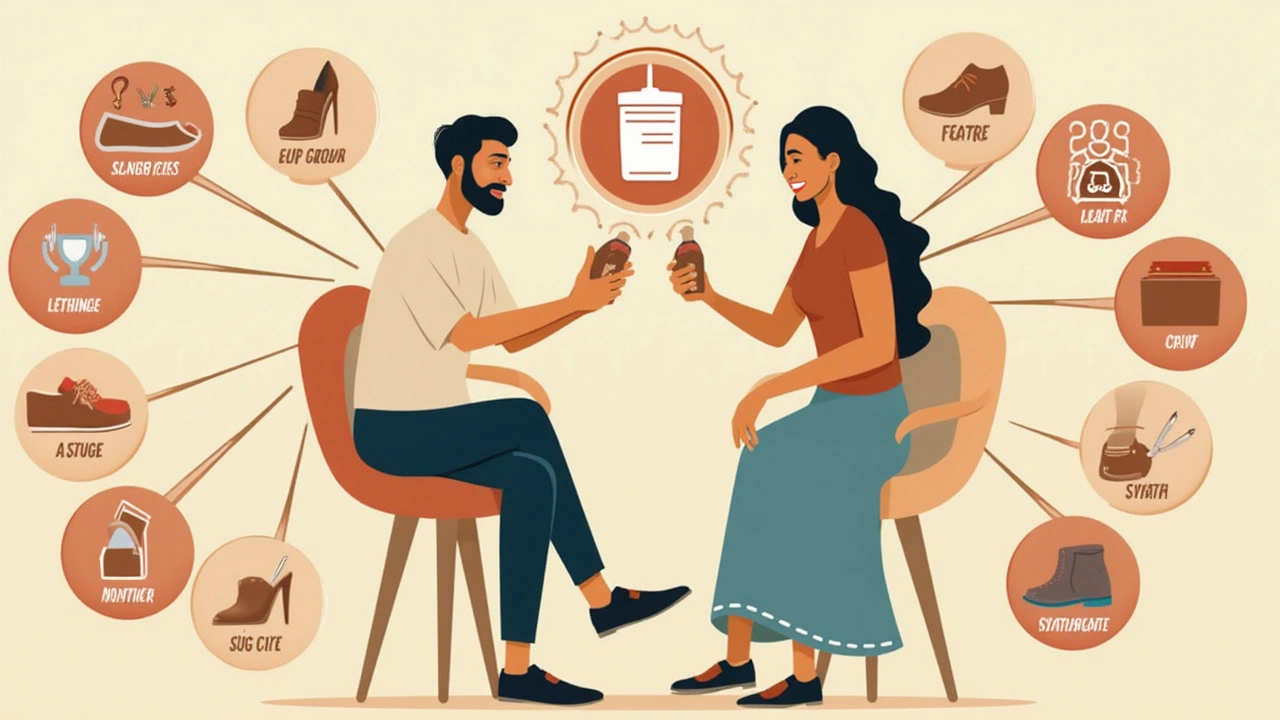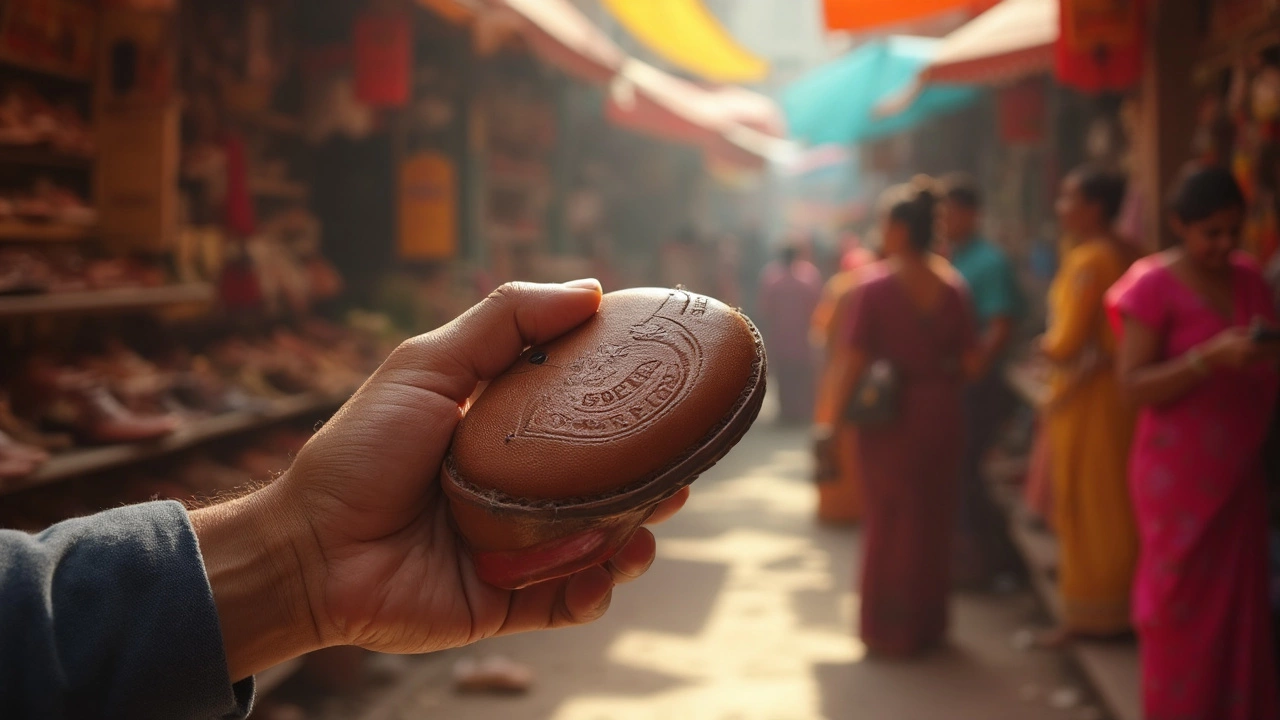Ever picked up a new pair of shoes, checked the label, and wondered what all those weird little drawings mean? That squiggly rectangle, the diamond, the crosshatch—it’s not just random art. If you want real leather shoes, you want to spot the right symbol fast.
The symbol for leather shoes is pretty simple: look for an icon that looks like the outline of an animal hide or a stretched oxhide rug. Usually, it’s a sort of irregular, wavy-edged rectangle (almost cartoon-ish). That’s the official short-hand across Europe and most other parts of the world for "genuine leather."
This little symbol isn’t there for fun. It’s actually required in many countries so you’re not tricked into paying extra for what turns out to be fake. When you see it, you know the main material used is actual leather, not "PU" or plastic dressed up to look fancy.
- That Leather Symbol Explained
- Where You’ll Find the Symbol
- Why the Symbol Matters
- Smart Shopping Tips for Leather Shoes
That Leather Symbol Explained
If you’ve ever stared at a shoe tag and tried to crack the code, you’re definitely not alone. The main symbol used for real leather on shoes is called the “hide symbol” or “leather symbol.” It looks like an irregular, wavy-edged shape, almost like an animal hide spread out flat. If you see this symbol, you’re looking at leather—no games, no tricks.
This symbol isn’t just for show. It’s a legal requirement in places like the European Union under the Footwear Labelling Directive (94/11/EC). Brands need to use it, so customers aren’t bamboozled by synthetic stuff posing as leather. As the European Confederation of the Footwear Industry puts it:
"The leather symbol is vital for consumer confidence, ensuring clarity and honesty about the materials used in footwear production."
The symbol usually crops up on the inside of the shoe, under the tongue, or on the packaging. Sometimes it’s stamped right on the lining or the sole, alongside other material marks. If you spot a diamond (that means man-made), or little crisscross lines (that means textile), don’t mix them up—the wavy hide is your best friend for picking leather shoes.
Wondering what all the different icons mean? Here’s a quick cheat sheet:
- Wavy Hide Symbol: Genuine leather
- Diamond: Synthetic or man-made materials
- Grid/Net: Textile fabric
And here’s how the symbols stack up when it comes to shoe parts:
| Shoe Part | Leather Symbol | Other Symbols |
|---|---|---|
| Upper | Usually present if leather | Diamond or Grid if not |
| Lining & Sock | Optional | Diamond/Grid possible |
| Outer Sole | Rare; most soles aren’t leather | Usually Diamond |
If you want authenticity, check for the wavy hide first—everything else is usually a trade-down in terms of quality, durability, and often comfort.
Where You’ll Find the Symbol
If you want to spot the leather symbol, you have to look in the right places. Start with the actual shoe itself. Most brands put the material symbols on the tongue, inner side, or under the insole. Sometimes, the symbol is stamped right next to the size info or printed onto the lining.
Check the shoebox, too. Especially for bigger brands, the box label usually includes a chart showing the main materials—upper, lining, and sole—each marked with the right icon. The leather symbol pops up when real leather is used in that part of the shoe.
If the shoes come with a little booklet or tag, flip through it. A lot of European, American, and Asian shoe companies use the same icon standards. In the EU, for example, the law says they have to tell you what the shoes are made of, using these icons for clarity. The symbol for leather shoes will always have that classic animal-hide outline.
Don’t forget online shopping. Reputable retailers often show a material breakdown in the product description or in the detailed specs. If there’s a material chart, look for that familiar wavy-edged rectangle. If you don’t see it, or the website just says "leather" without a symbol or further info, double-check—plenty of sites (especially the smaller ones) sometimes skip over the details.
- On the shoe: tongue, inner lining, under the insole
- On the shoebox: label or info sticker
- On product tags or booklets
- On online shops: product details section
If you know where to look, you’ll spot real leather every time.

Why the Symbol Matters
If you care about quality, comfort, or even just getting your money’s worth, noticing that leather shoes symbol can make all the difference. Real leather isn’t just a sales pitch; it actually performs better than most synthetic materials. It breathes better, stretches to fit your foot, and usually lasts a lot longer if you take care of it.
The law even steps in here. In Europe and the UK, shops legally must label footwear materials using these graphics. It’s a direct way for you to spot what’s legit or not. So, when you’re choosing between two pairs of shoes that look the same, but one has that hide symbol and the other has a diamond (which stands for man-made), you’re making a more informed decision.
Here’s a quick look at why recognizing this symbol is so useful:
- It helps spot genuine leather in a second—no guessing needed.
- You avoid paying premium prices for artificial or "PU" leather.
- It gives you the edge in knowing what’s best for your comfort and how you need to care for the shoe.
- Most good-quality and durable dress shoes stick with the real-deal symbol.
Some shoppers get burned by flashy marketing. One 2023 consumer study found that 31% of buyers who thought they bought leather shoes ended up with synthetics. If there’s ever a time to be picky, it’s when you spot that label.
| Material | Symbol | Main Feature |
|---|---|---|
| Leather | Hide/skin outline | Breathable, stretches, durable |
| Coated Leather | Hide with dots | Protective layer, partly synthetic |
| Man-Made | Diamond | Wears faster, less breathable |
Bottom line? Always look for the symbol if you want the benefits of leather and to avoid fake stuff. Simple, but it keeps your feet happy and your wallet safer.
Smart Shopping Tips for Leather Shoes
When you’re hunting for leather shoes, learning some insider tricks will save you money and headaches. Don’t just buy the first pair you see—or trust what’s printed on the box. Sneakers and dress shoes look nicer in the shop than after a month of real life. Here’s how to make sure you’re getting real deal leather and not some plastic wannabe.
- Check the symbol—every time. Forget the little tags on the laces or generic "leather" printed in gold. Flip that shoe over and look inside for that animal-hide symbol. If it’s not there, there’s a good chance you’re being sold fake leather.
- Trust your fingers and nose. Real leather feels cool, has a slight grain, and smells... well, like leather. Fakes often feel shiny, plasticky, or rubbery. The smell is a giveaway too—plastics have a chemical tang, real leather has a warm, subtle scent.
- Check the origin. European shoe makers have strict rules thanks to the EU Footwear Labelling Regulation (2011). If the shoes are made there and have the leather symbol, you’re probably set. Shoes from places with less oversight? Be more skeptical.
- Price tells you a story. Leather shoes under $40—unless heavily discounted—raise red flags. Real leather costs more from the start. Crazy bargains most likely mean synthetic materials.
Shoe labels can also tell you where the leather is used: upper, lining, or sole. Most people focus on the upper, but lining matters for comfort (real leather liners help with sweat and smell). Here’s a little cheat sheet to help you next time you’re shopping:
| Symbol | What It Means | Where You’ll See It |
|---|---|---|
| Animal hide outline | Genuine leather | Upper, lining, or sole |
| Diamond | Man-made (synthetic) | Usually the sole or lining |
| Grid or mesh | Textile/fabric | Lining or upper |
Some stats: according to the World Footwear Yearbook, as of 2024, less than 19% of shoes sold globally were made entirely with real leather uppers. Most shoes combine materials, so that little symbol is more useful than ever.
If you’re shopping online, ask the seller to show a close-up of the label. Honest brands show the symbol. And remember—shoes last a lot longer when you care for them. Once you buy leather, grab some conditioner and a good brush. Your feet and your wallet will thank you later.
